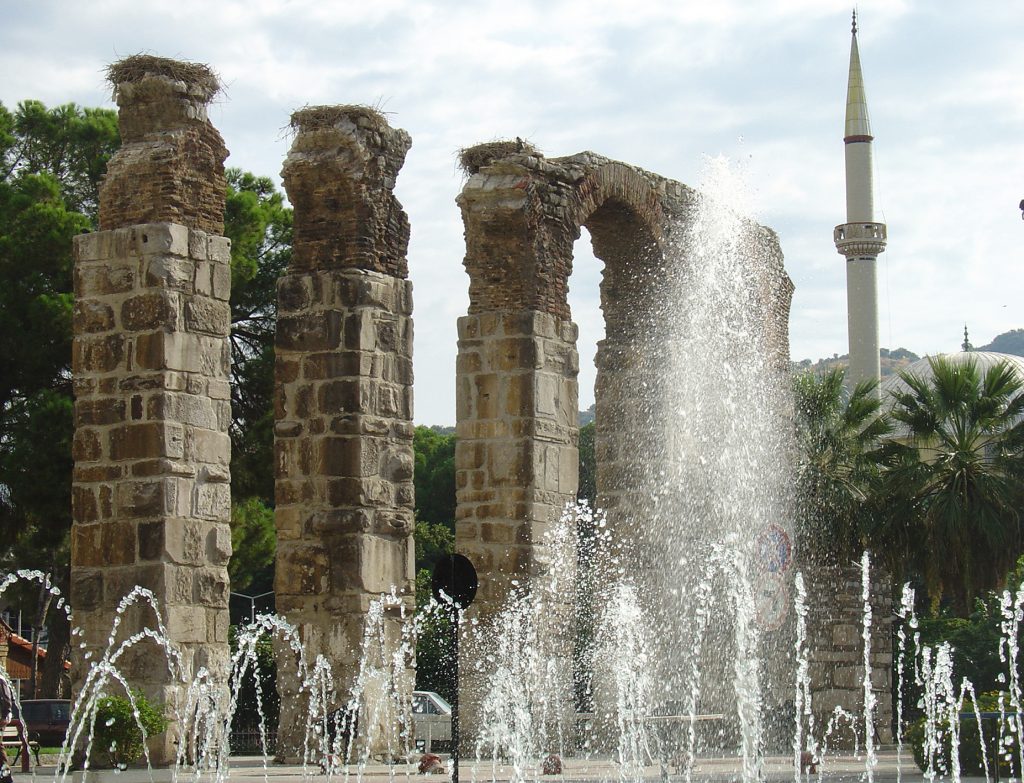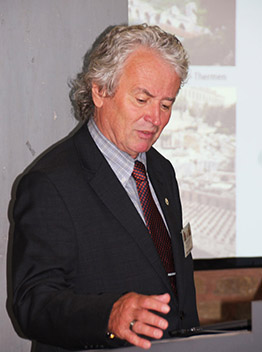ON TUESDAY NOVEMBER 26TH
AT THE NATIONAL MUSEUM OF ANTIQUITIES IN LEIDEN, THE NETHERLANDS
Dipl. Ing. Gilbert Wiplinger
DE AQUAEDUCTU URBIS EPHESI
WATER FOR ROMAN EPHESUS

With the 2004 conference Cura aquarum in Ephesus, the ongoing series of international congresses on the history of water management and hydraulic engineering in the Mediterranean Region was continued with the aim of placing the newly started aqueduct research in the metropole of the Roman province Asiae on an international discussion platform. This and three other symposia were published in the BABESCH Supplements series and the interdisciplinary research project at the Degirmendere aqueduct at Ephesus was advanced in parallel.
The development of the city of Ephesus is reflected in its water supply. When Lysimachus built the city on a new site at the beginning of the 3rd century BC, a simple clay pipe line from a nearby spring was sufficient. It was not until the city’s heyday in the first quarter of the 2nd century AD that channels were built under Trajan and Hadrian in order to supply large quantities of water from springs further away to the rapidly growing population with their luxurious baths, magnificent fountains and well equipped houses.
The exploration of the 36.5 km long Degirmendere aqueduct was a special challenge. Water was transported over 24 bridges and through four tunnels. The first channel was constructed in Hadrian times and allowed to transport a water volume of 21,000 m3 per day. After 30-35 years of operation, the small channel was torn apart by 3 m during an earthquake. This necessitated the construction of a new aqueduct at the end of the Antonine period. This aqueduct was given a larger cross-section and thus 50,000 m3 per day could be transported into the city. During its operating time up to the third quarter of the 4th century AD, many repairs were necessary, especially on the steep slopes and in the extremely flat channel. On the one hand, the slope pressure was absorbed by supporting buttress pillars attached to the channel, and on the other hand, many bypasses were necessary to avoid overflows. The results of this new research are manifold and fascinating.

Gilbert Wiplinger was architect and building researcher at the Austrian Archaeological Institute (ÖAI) in Vienna from 1978 to 2018. He finished his studies of architecture at the Technical University of Vienna in 1978 with the thesis ‘Securing the ruins of the Terrace Houses at Ephesus‘ as a student of Hermann Vetters, past director of the ÖAI and Ephesus excavations. He designed and developed roofs over the living units 1 and 2 in the Terrace House 2 of Ephesus, oversaw their restoration (1978-1988) and also planned and managed the reconstruction and expansion of the excavation settlements in Ephesus and Tell el-Dab’a (Egypt), where he also participated in the excavations (1990-2005). As a building researcher, he investigated the above-mentioned living units (1995-2000), where his interest in water supply in antiquity and the Frontinus Society was awakened. Since 2001, he has been researching the aqueducts of Ephesus in general, and the Değirmendere aqueduct in detail working with an international and interdisciplinary team. The results of this research are published in BABESCH Supplement 36 (2019).
Wiplinger has organized multiple conferences on the history of water management and hydraulic engineering in the Mediterranean Region, the proceedings of which appeared in the BABESCH Supplement series: Ephesus 2004 Cura aquarum in Ephesus (vol. 12), Vienna 2011 Historische Wasserleitungen. Gestern – Heute – Morgen (vol. 24), Antalya 2014 De aquaeductu atque aqua urbium Lyciae Pamphyliae Pisidiae – The Legacy of Sextus Julius Frontinus (vol. 27), Trier 2016 (as co-organiser) Wasserwesen zur Zeit des Frontinus. Bauwerke – Technik – Kultur (with W. Letzner, vol. 32), and Rome 2018 De aquaeductu urbis Romae – Sextus Julius Frontinus and the water of Rome (forthcoming).Gilbert Wiplinger is member of the board of the Frontinus Society since 2006 and chairman of the Scientific Advisory Board since 2015. In 2016, he was honoured with the Frontinus Medal in recognition of his scientific achievements in the research of water supply systems, especially aqueducts in the area of ancient Ephesus.
Dr. Gert Jan van Wijngaarden (University of Amsterdam) moderated the evening